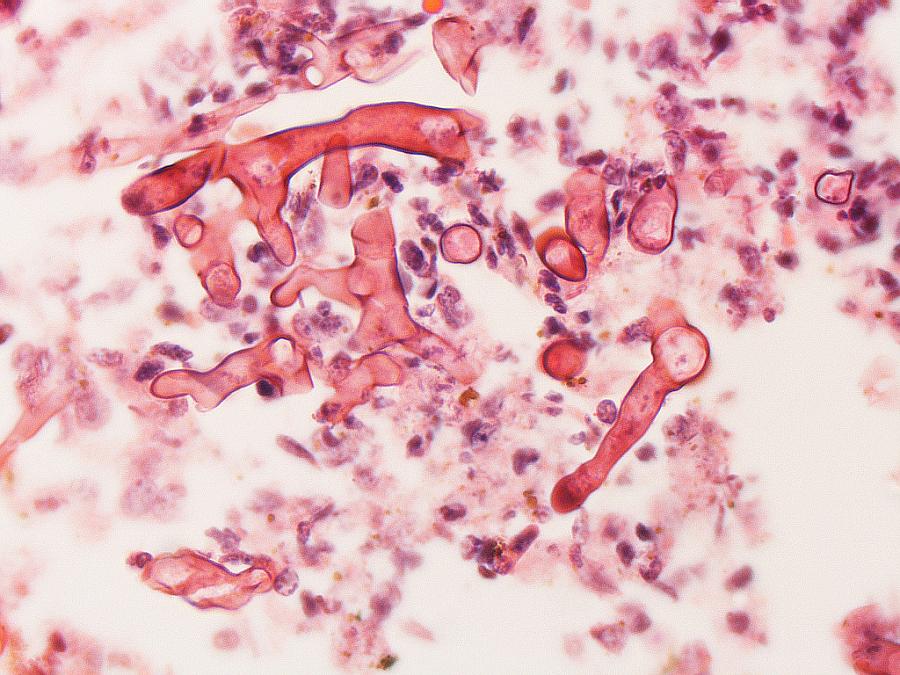No One Knows: Hidden child deaths from fungus raise question of how much families should know

Mucormycosis
In New Orleans, parents of children who died after contracting fungal infections from hospital linens are justifiably upset about the fact that the extent of the problem was kept secret for five years.
Because of the way hospitals are regulated, though, this scenario could be happening all the time and most people would be none the wiser.
First, for those of you outside Louisiana, here’s what’s happening. In 2008 and 2009, at least five children died after contracting a mucormycosis infection at Children’s Hospital in New Orleans. Hospital officials didn’t make the cluster of infections public. They didn’t tell the families of each of the children that other children had died from the same cause. Legally, they didn’t have to.
But they did ask the state health department and the U.S. Centers for Disease Control and Prevention for help in tracking down the cause of the infections.
John Simerman at The New Orleans Advocate reported on the case and wrote:
Dr. John Heaton, associate medical director for patient quality and safety at Children’s Hospital, said the hospital acted quickly, recognizing a commonality in skin lesions on two patients in a special care unit in 2009. The hospital immediately called in state health officials and the CDC, he said.
“That set off the alarm,” Heaton said. “As soon as we noticed, as is our policy anytime there’s an outbreak, we jump on it with both feet.”
The infections were traced to bed sheets and other linens, but hospital officials didn’t tell the families about that discovery.
In fact, none of this probably would have come to light if the U.S. Centers for Disease Control and Prevention hadn’t investigated and, eventually, published a study about the deaths in The Pediatric Infectious Diseases Journal this month.
When the study was covered in the New Orleans Times-Picayune, one mother contacted a reporter and said that nearly six years after her son’s death, the newspaper finally had connected the dots for her. Reporter Rebecca Catalanello wrote:
For months, Cassandra Gee would return to the box to touch the things her firstborn son touched before he died on Aug. 25, 2008, at 44 days old. They helped soothe the pain of her goodbye, but they never provided answers to the one nagging question that haunted her for years until now: Why did he die?
On Wednesday, Gee, 31, read a story on NOLA.com | The Times-Picayune that she believes supplied the answer that she says the hospital never gave her: he died because he became infected by a deadly fungus that was passed to him through the linens that brushed his fragile skin.
“I always knew it was something with the hospital,” she said at her Metairie home on Wednesday evening, the box of Tyrel’s belongings open before her. “I just didn’t know exactly what it was.”
Heaton told reporters at a press conference that the hospital should have notified families sooner.
“We failed to do what we should have done, pure and simple. We dropped the ball,” Heaton said in a story by The Advocate.
Gee says that it would have comforted her to know more about why her son died. And that may be reason alone to blame the hospital for not providing more information to families. Hospitals are in a tricky position, though. On the one hand, federal regulations mandate they not share information about any specific patient with any other patients – or with the rest of the public. That’s part of the Health Insurance Portability and Accountability Act. On the other hand, they have patients who understandably want to know more.
I asked a similar question when the Yakima Herald-Republic and NBC reported on a series of severe birth defects found in Eastern Washington hospitals. How does it help parents to know that other children with the same birth defects also were born a few months or weeks prior? The answer to that question could help guide what hospitals such as those in New Orleans and Eastern Washington do going forward. I’ll provide a few suggested answers in my next post.
Photo by Yale Rosen via Flickr.
